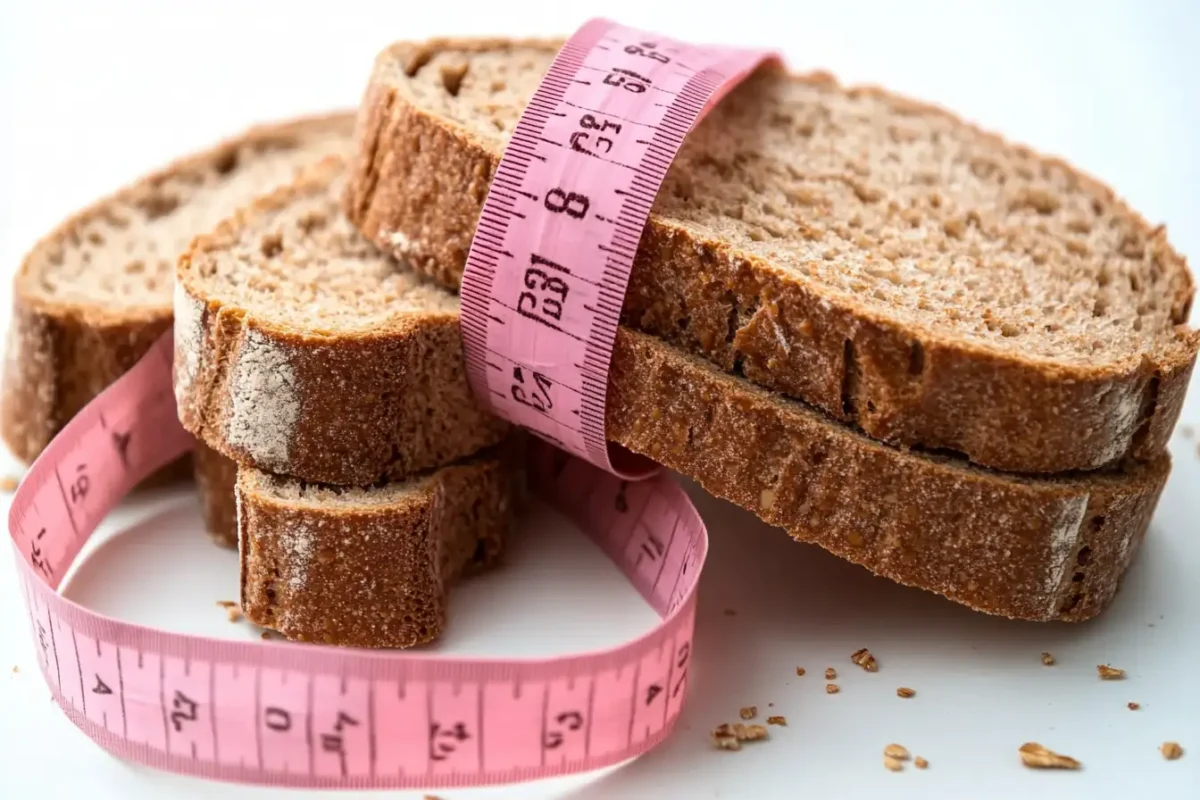Exploring the Relationship Between Weight Loss and Sourdough Bread
Unveiling the Unique Qualities of Sourdough Bread in the Context Of Weight Loss With its unique fermentation process and potential health benefits, Sourdough bread has captured the attention of those looking to maintain or lose weight. But can this bread support your weight-loss journey? This article dives into how sourdough’s nutrient profile, its effects on blood sugar levels, and its role in gut health make it an appealing option for dieters. From understanding its composition to learning how to incorporate it into your meals, we’ve covered you with actionable insights backed by science.
Table of Contents
What is Sourdough Bread?

Sourdough bread isn’t just another type of bread—it’s a culinary tradition that has stood the test for centuries. The unique fermentation process, where wild yeast and lactic acid bacteria work their magic, gives sourdough its signature tangy flavour and makes it easier to digest than conventional bread. This ancient process is still valued for its nutritional perks today.
Unlike bread made with commercial yeast, sourdough relies on a slow rise. Enzymes break down starches during this time, resulting in a more nutrient-dense product. But how does this relate to weight loss? Let’s
delve deeper.
If you’re excited to explore the world of sourdough further, why not try some delicious recipes? From classic loaves to creative dishes, sourdough can be the star ingredient in many meals. For inspiration, check out :
Nutritional Profile of Sourdough Bread
Macronutrient Composition
Sourdough bread typically contains a balance of carbohydrates, proteins, and fats. While carbs often get a bad rap in weight-loss circles, the complex carbohydrates in sourdough digest more slowly, providing sustained energy without the rapid spikes in blood sugar. Additionally, its protein content supports muscle maintenance, which is crucial for an effective weight-loss plan.
Vitamins and Minerals
Rich in B vitamins, iron, selenium, and zinc, sourdough bread offers more than just energy. These nutrients are pivotal in metabolism, energy production, and overall cellular health. For example, iron improves oxygen transport in the blood, boosting endurance during physical activities that aid in weight loss.
The Fermentation Process and Its Impact on Health
Role of Lactic Acid Bacteria
The fermentation process in sourdough involves lactic acid bacteria, which enhance nutrient availability. This means your body can absorb more of the vitamins and minerals present in the bread. Additionally, the acidity produced by these bacteria lowers the bread’s pH, making it less likely to cause a sudden glucose spike—an important factor for those managing their weight.
Influence on Digestibility
Sourdough is notably easier to digest than many other breads. Phytic acid—a compound that can inhibit nutrient absorption—is broken down during fermentation. This improves digestibility and reduces bloating, making you feel lighter and more comfortable after meals.
Sourdough Bread in the Context of Weight Loss
Glycemic Index of Sourdough Bread Compared to Other Breads
Understanding Glycemic Index
The glycemic index (GI) measures how quickly a food causes blood sugar levels to rise. Foods with a lower GI are digested and absorbed more slowly, helping keep you full longer and preventing energy crashes. Sourdough bread boasts a lower GI than most commercially processed breads due to its fermentation process. It is a standout choice for those focusing on weight management.
Sourdough vs. White and Whole Wheat Bread

When comparing sourdough with white and even whole wheat bread, sourdough consistently comes on top. While white bread has a high GI, causing blood sugar spikes, sourdough’s slower digestion keeps glucose levels steady. Even whole wheat bread, despite its fiber content, may not offer the same metabolic benefits as sourdough due to differences in how they’re processed.
For a deeper dive into how the glycemic index impacts weight loss, refer to this comprehensive guide on understanding the glycemic index.
Impact on Blood Sugar Levels and Satiety
Blood Glucose Response
Sourdough’s unique fermentation process lowers its GI and enhances its ability to modulate blood glucose levels. It means that after eating sourdough, your body releases insulin in a more controlled manner, reducing fat storage and promoting energy use—a winning combination for weight loss.
Appetite Control and Fullness
Feeling full for longer is a significant benefit of sourdough bread. The slow breakdown of carbohydrates, coupled with its fiber content, helps regulate hunger hormones. By curbing mid-meal cravings, sourdough becomes an effective ally in maintaining a calorie deficit, which is essential for shedding pounds.
Sourdough Bread and Gut Health

Prebiotics and Probiotics
Sourdough bread acts as a prebiotic, feeding the good bacteria in your gut. A healthy gut microbiome is strongly linked to improved metabolism and weight control. Fermentation also introduces probiotic benefits, which can further enhance digestion and nutrient absorption, aiding your weight-loss journey.
Effects on Metabolism
By supporting gut health, sourdough indirectly boosts metabolic efficiency. Improved digestion leads to better calorie utilization, while balanced gut bacteria can influence how your body stores and uses fat. Regularly including sourdough bread may contribute to a healthier metabolic profile overall.
Caloric Content and Portion Considerations
Calorie Comparison with Other Breads
It’s important to note that sourdough bread, while nutritionally superior in many ways, contains calories similar to other breads. However, its lower GI and higher satiety make it easier to consume fewer calories overall. A slice of sourdough typically has around 120-150 calories, depending on the recipe and serving size.
Importance of Portion Control
Despite its benefits, it’s important to remember that portion control is key when adding sourdough to a weight-loss diet. Overindulging can negate its positive effects. To stay within your calorie goals while enjoying its benefits, stick to one or two slices per meal, paired with lean proteins and vegetables.
Practical Considerations and FAQs
Incorporating Sourdough Bread into a Weight Loss Diet
Choosing the Right Type of Sourdough
Not all sourdough bread is created equal. Authentic sourdough is made using traditional fermentation methods without added sugars or artificial ingredients. Look for bread with simple, whole-food ingredients such as flour, water, and salt when purchasing. Avoid commercial versions labelled as “sourdough” but containing added yeast—they lack the same health benefits.
For the most nutritional impact, consider whole-grain sourdough. It combines the fermentation benefits with the higher fibre content of whole grains, making it a double win for your weight-loss journey.
Healthy Serving Suggestions

Pairing sourdough with nutrient-dense toppings can elevate its benefits. Spread avocado, add lean proteins like turkey or grilled chicken, or layer with fresh vegetables for a balanced meal. Avoid calorie-dense spreads like butter or sugary jams, which can offset sourdough’s health advantages.
A quick meal idea? Try a sourdough slice with hummus, spinach, and a poached egg—it’s satisfying, nutrient-packed, and keeps you full for hours.
Potential Drawbacks and Considerations
Gluten Content
While sourdough is easier to digest than other breads, it still contains gluten. For individuals with celiac disease or severe gluten intolerance, sourdough remains off the table. However, those with mild gluten sensitivities may find sourdough easier on the stomach due to the breakdown of some gluten proteins during fermentation.
Sodium Levels
Another consideration is sourdough’s sodium content. Many recipes rely on salt for flavour and dough stability. Excess sodium can contribute to bloating and water retention, which might mask weight-loss progress. Opt for low-sodium varieties or moderate your intake to keep sodium levels in check.
Frequently Asked Questions
Is sourdough bread suitable for a low-carb diet?
Sourdough is not classified as low-carb but may fit into moderate-carb diets due to its lower glycemic impact and slower digestion rate.
Can individuals with gluten sensitivity consume sourdough?
People with mild gluten sensitivities often tolerate sourdough better, but it’s not safe for those with celiac disease.
How does sourdough compare to other breads for weight loss?
Sourdough’s lower glycemic index, better nutrient absorption, and improved satiety make it a superior choice for weight management to white or whole wheat bread.
What is the best time to eat sourdough bread for weight loss?
It’s best consumed earlier in the day, paired with a balanced meal, to fuel your body and support metabolic activity.
Are there specific toppings that enhance the weight loss benefits of sourdough?
Yes, opt for toppings like avocado, lean proteins, and non-starchy vegetables. These add fibre, healthy fats, and protein to keep you full and energized.
How often can I include sourdough bread in my diet?
Including sourdough a few times a week as part of balanced meals can support weight loss without compromising variety in your diet.
Conclusion
Sourdough bread is more than just a flavorful addition to your diet—it’s a potential ally in your weight-loss journey. Its unique fermentation process, lower glycemic index, and impact on gut health make it a standout choice compared to other breeds. Sourdough can complement a balanced weight-loss plan by supporting digestion, promoting satiety, and providing valuable nutrients.
However, as with any food, moderation is key. Incorporating authentic sourdough bread into meals, paired with healthy toppings and mindful portions, ensures you enjoy its benefits without overindulging. Whether you’re a sourdough enthusiast or just beginning to explore its possibilities, this bread can play a meaningful role in a healthier, more sustainable weight-loss approach.

